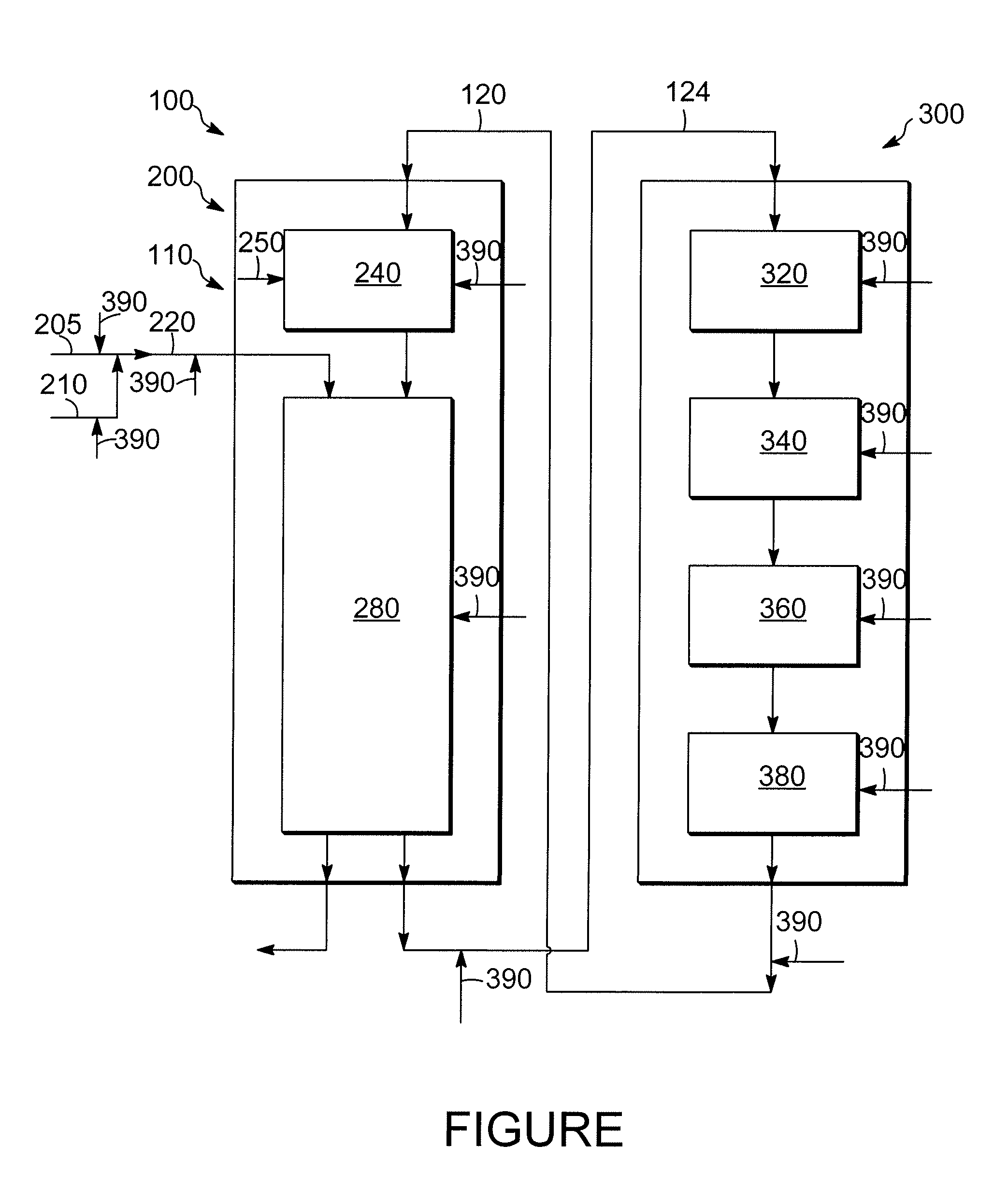Process and System for the Addition of Promoter Metal In Situ in a Catalytic Reforming Unit
a technology of catalytic reforming unit and promoter metal, which is applied in the direction of catalyst regeneration/reactivation, thermal naphtha reforming, physical/chemical process catalysts, etc., can solve the cost of replacing a large volume of catalyst, and achieve the effect of improving the selectivity of catalyst particles, improving the activity of catalyst particles, and improving the conversion rate of hydrocarbon feed
- Summary
- Abstract
- Description
- Claims
- Application Information
AI Technical Summary
Benefits of technology
Problems solved by technology
Method used
Image
Examples
example
[0055]200 cc of a fresh commercial continuous regeneration catalyst comprising Pt, Sn, and Cl on gamma alumina was loaded into a quartz reactor in four beds containing 50 cc each of the catalyst. The beds were numbered sequentially with Bed 5 located nearest to the top of the reactor, and bed 2 located nearest to the bottom of the reactor. The beds were separated by quartz wool. At the bottom of the reactor, in bed 1, a bed of 200 cc of the gamma alumina support was loaded. The initial indium levels of the catalyst and of the support were zero wt. %. Spacers were located above the top bed.
[0056]A regeneration procedure was conducted in the reactor. The steps of the regeneration procedure included (1) a heat up period in air ramping the temperature from ambient to 510° C. at 1.4° C. / min. (2) introduction of Cl2 and a HCl-containing solution as described below, during an oxychlorination step for 8 hours at 510° C. (3) Cool down period with full air to reach 93° C. (4) a reheat / ramp pe...
PUM
| Property | Measurement | Unit |
|---|---|---|
| temperature | aaaaa | aaaaa |
| pressure | aaaaa | aaaaa |
| temperature | aaaaa | aaaaa |
Abstract
Description
Claims
Application Information
 Login to View More
Login to View More - R&D
- Intellectual Property
- Life Sciences
- Materials
- Tech Scout
- Unparalleled Data Quality
- Higher Quality Content
- 60% Fewer Hallucinations
Browse by: Latest US Patents, China's latest patents, Technical Efficacy Thesaurus, Application Domain, Technology Topic, Popular Technical Reports.
© 2025 PatSnap. All rights reserved.Legal|Privacy policy|Modern Slavery Act Transparency Statement|Sitemap|About US| Contact US: help@patsnap.com

